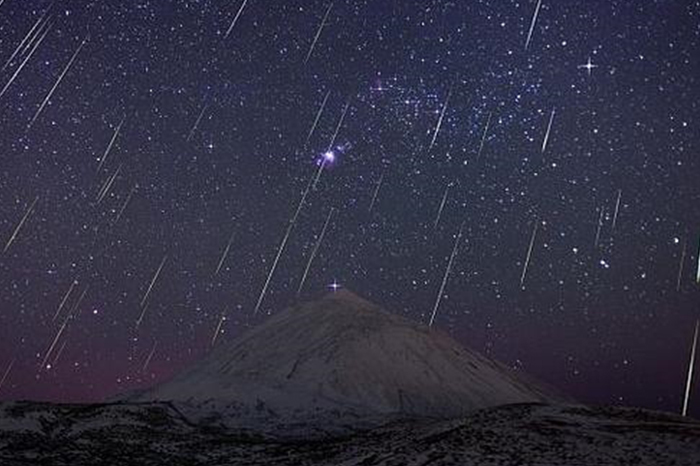EFE / Michoacan Voice
The peak of the Geminid meteor showers will occur this year on December 12 and 13, which is the perfect time to observe these meteors which, unlike the rest, do not come from a comet but rather from an asteroid, “Phaeton”. “Total Destroyer”.
The Institute of Astrophysics in the Spanish Archipelago of the Canary Islands (IAC), which will broadcast the event from the TED Observatory on the island of Tenerife via sky-live.tv, said Friday in a statement that for the past decade the Geminids have long said goodbye to the year that exceeded 100 meteors per hour.
In 2020, they exceeded 130 meteors per hour, making them topping the annual ranking of meteor showers, followed by meteor shower and meteor shower.
This year’s Geminids will take place between December 7-17 and the maximum is expected at 07:00 UTC on December 14, the nights of December 12-13 and December 13-14 will be the best moments to watch. Meteor shower.
Meteorites have their luster in the constellation Gemini (the twins), which will be close to the constellation Gemini. However, this year, the moon will be in a quarter to rising during the nights of maximum activity, which makes it difficult to see the faintest meteors, so it is recommended to watch it from midnight.
To make sure you see as many Geminis as possible, stay in a dark place — free from light pollution from cities — and with a clear horizon, the IAC explains.
It is advisable to fix your gaze on an area of the sky and hold it for at least a few minutes until you can “spot” the Geminid. It is recommended to lie on the floor and wear warm clothes. And most importantly: you have to be patient, continue.
Gemini is rain that can be observed from both hemispheres, although the activity will be greater from the north than from the south because the radiation will be higher above the horizon.
The ancestors of meteor showers are usually comets, but in the case of Gemini they are not, since a small celestial body – the asteroid (3200) Phaethon – has been the “supposed” ancestor of the gem since 1983, which is a mystery to astronomers.
In fact, a team led by Dave Jewitt (UCLA), with the help of NASA’s STEREO investigations, realized in 2010 that Python was experiencing an increase in its brightness.
It was something new that they called a “rock comet.” A hybrid between an asteroid and a comet, that is, it is a strange asteroid that gets very close to the sun – it does this every 1.4 years, similar to what comet it does – the heat from the star “burns” the dust residue that covers the rocky surface and thus forms a kind of “gravel tail”.
In this regard, Javier Lisandro, a researcher at IAC, comments that the Phaethon, which has a diameter of 4 or 5 kilometers, is “completely destructive” because if it hit the Earth, it would produce a “global catastrophe that would destroy species, possibly including”.
However, Phaethon does represent a minor hazard in the list of potentially dangerous objects, the astronomer points out, noting that however “we have to control it because the orbits of these small asteroids passing near the Earth are affected by many of the effects that they can make, In the future, the orbit could lead to a collision orbit.”
This rain, one of the most attractive to many researchers, was first observed in 1862. “Since 2012, we have followed the Geminids from Teide Observatory regularly and they have always given us a great show,” says researcher Miquel Serra-Ricart, who notes That Geminids, unlike Perseids, are slow meteors and therefore easy to ‘catch’.

“Problem solver. Proud twitter specialist. Travel aficionado. Introvert. Coffee trailblazer. Professional zombie ninja. Extreme gamer.”




More Stories
With a surprise in the case: a strange cell phone from Nokia was introduced
PlayStation Stars: what it is, how it works and what it offers to its users | Sony | video games | tdex | revtli | the answers
t3n – Digital Pioneers | digital business magazine